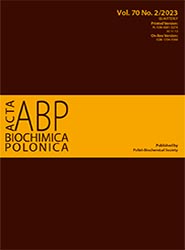MicroRNA-196-5p targets Derlin-1 to induce autophagy in human osteosarcoma cells
Abstract
Osteosarcoma is a highly prevalent type of primary bone tissues in children and young adolescents. Micro-RNA (miR) dysregulation has been linked to osteosarcoma tumorigenesis. The role of miR-196-5p was investigated in modulating the growth and metastatic behaviour of human osteosarcoma cells, along with exploring its mechanism of action. As shown by RT-qPCR expression analysis, osteosarcoma cell lines exhibited prominent (P<0.05) transcriptional repression of miR-196-5p. The latter was thus transiently overexpressed in osteosarcoma cells, which resulted in the loss of cell viability and colony formation via induction of autophagy. The western blot analysis of the autophagy marker proteins revealed that the expression of Beclin 1 and LC3B II proteins was induced by miR-196-5p, whereas that of p62 and LC3BI was repressed. Moreover, osteosarcoma cells overexpressing miR-196-5p showed significantly (P<0.05) lower migration and invasion concerning the control osteosarcoma cells. According to the results of the in-silico analysis, Derlin-1 participates in the regulation of miR-196-5p in osteosarcoma, and this prediction has been validated using a dual luciferase assay. The results indicated that miR-196-5p exerted its molecular role by targeting Derlin-1 at the post-transcriptional level. Summing up, the study revealed the modulatory potential of miR-196-5p/Derlin-1 on osteosarcoma cells and provided insights into the possible implications for the treatment and prognosis of the disease.
Acta Biochimica Polonica is an OpenAccess quarterly and publishes four issues a year. All contents are distributed under the Creative Commons Attribution-ShareAlike 4.0 International (CC BY 4.0) license. Everybody may use the content following terms: Attribution — You must give appropriate credit, provide a link to the license, and indicate if changes were made. You may do so in any reasonable manner, but not in any way that suggests the licensor endorses you or your use.
Copyright for all published papers © stays with the authors.
Copyright for the journal: © Polish Biochemical Society.


